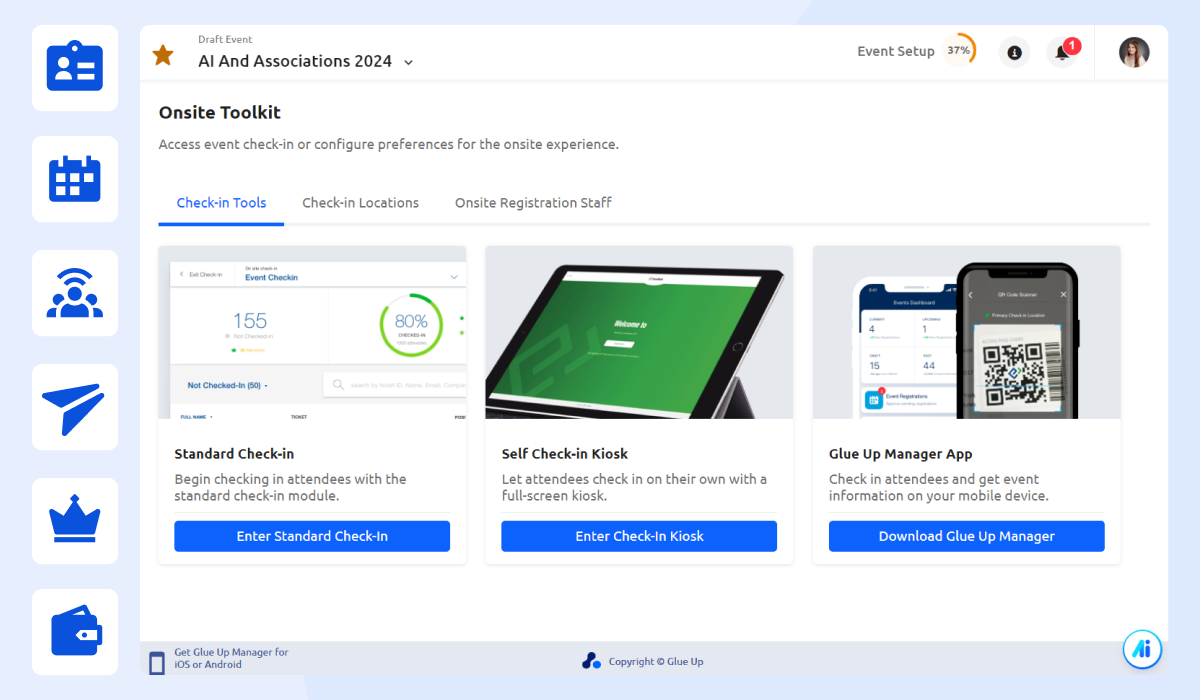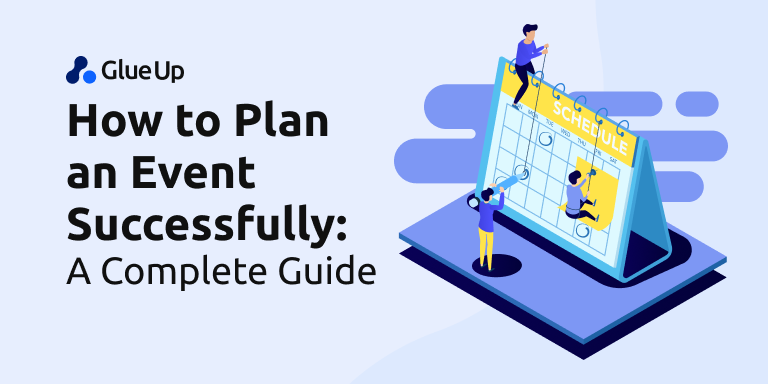
A trade show showcases what you bring to your clients and potential clients. The better you execute this show, the greater the benefit for your organization. However, it requires significant effort and planning.
Executing a successful trade show demands more than just logistics; it requires a well-thought-out strategy covering every aspect, from pre-event preparation to post-event follow-ups.
Numerous behind-the-scenes tasks need to be managed for a successful trade show. While some associations are aware of this, many, especially those planning their first trade show, may not fully understand what is involved.
This blog aims to provide them with essential tips and best practices for effectively planning, executing, and maximizing the impact of their trade show.
If you are one of those looking for guidance, read on to ensure your next trade show is a standout success.
Key Takeaways
- Defining goals and understanding your target audience is vital for successful trade show planning.
- Create a detailed timeline and allocate funds strategically to stay organized and avoid unexpected expenses.
- Use social media, email campaigns, and PPC ads to build anticipation and drive traffic to your booth.
- Ensure smooth booth operations, train staff well, and use interactive activities to engage attendees and collect quality leads.
- Glue Up’s AI-powered AMS offers event tools, CRM integration, and automated communications to streamline planning and enhance the attendee experience.
Understanding Your Trade Show Objectives
Before hosting a trade show, you must first understand your trade show objectives. To do this, you need to identify a few essential elements, such as:
Defining Clear Goals
You must establish what you want to achieve with your trade show participation before diving into the planning process.
Whether your focus is on lead generation, increasing brand awareness, launching a new product, boosting member engagement, or building partnerships, having clear goals will guide your strategy and execution.
Target Audience Identification

Knowing who you aim to attract is crucial for tailoring your approach. Identify your target audience, including potential clients, industry partners, or other stakeholders, to make sure your booth, messaging, and presentations resonate with the right people.
Only 42% know the basic demographic information of their target audience, while 58% remain unaware. Such a significant gap needs attention; understanding your audience allows you to customize your trade show to effectively meet their needs.
Creating a Detailed Trade Show Plan
Once you have set your goals and identified your target audience, the next step is to create a detailed plan.
There are several ways to create an effective plan, such as:
Timeline Management
A well-structured timeline for your trade show is mandatory. Develop a roadmap that covers every phase, from initial planning to the event day, including a detailed schedule with all dates and times.
This approach guarantees tasks are completed on schedule and keeps the team organized and focused.
Budget Planning

Budgeting is one of the most important parts of trade show planning. Strategically allocate funds for key aspects such as venue costs, booth setup, marketing campaigns, promotional materials, and staffing.
Proper budget management helps avoid unexpected expenses and keeps the event financially viable.
Selecting the Right Trade Show and Venue
Done with planning? Now, it’s time to select the right trade show and venue. This step can be challenging, but you can achieve it effectively by following these approaches:
Researching the Best Trade Shows
To maximize your return on investment and engagement, you should research events that align with your goals, industry focus, and target audience. Then, choose the trade show that best meets your objectives.
You can opt for industry-specific trade shows, B2B expos, consumer trade shows, or networking fairs.
Venue Selection Considerations
The venue plays an important role in your trade show’s success.
Consider factors such as location, size, and accessibility to make sure it meets your needs and fits within your budget. Venues are one of the top expenses for hosting an event but are essential for providing a convenient experience for attendees.
A well-chosen venue can boost your event visibility and attract the right audience.
Booth Design and Setup
Your booth design and setup play an essential role in attracting attendees and making a strong first impression. Both should be well thought out to maximize their impact. Focus on elements such as the following to enhance engagement and create a memorable experience.
Creating an Eye-Catching Booth
Designing a visually appealing and functional booth can help draw in attendees. Focus on strong branding, an effective layout, and ensuring that your booth reflects your company’s identity while maximizing the available space for interaction.
Interactive Elements
Incorporating interactive elements can significantly boost engagement. Utilize product demonstrations, interactive technology, and hands-on experiences to capture interest and encourage attendees to spend more time at your booth, making their visit memorable and impactful.
Pre-Event Marketing and Promotion
When all preparations are complete, the audience is identified, the plan is made, the budget is set, and the venue is decided, the only thing left is to inform your target audience.
Let them know you are organizing a trade show that caters to their needs. There are multiple ways to achieve this, such as:
Promoting Your Presence
Maximize your trade show success by promoting your participation through various channels. Use social media, targeted email campaigns, partnerships, and online ads to create buzz and drive traffic to your booth.
Statistics show that PPC returns $2 for every $1 spent, resulting in a 200% ROI. Investing in marketing can be highly profitable, as it can double your return. Take advantage of ads and let everyone know about your trade show.
Building Anticipation
Another way to market your show is to build excitement before the event by offering exclusive previews, special deals, or running contests. These strategies help capture attention and motivate attendees to visit your booth.
Managing On-Site Logistics
When all the planning and marketing efforts are complete, it's time for execution. Managing on-site logistics is crucial to ensuring everything runs smoothly.
Here’s how to approach this effectively:
Staffing and Training
Double-check that your team is well-prepared for the event by providing training on interactions, product demonstrations, and efficient lead collection. A knowledgeable and friendly staff enhances the attendee experience and boosts your brand's reputation.
Booth Efficiency
Check that all technology, displays, and supplies are set up and functioning smoothly. This confirms seamless presentations and interactions, allowing you to focus on engaging attendees and maximizing your trade show presence.
Engaging Attendees During the Trade Show
For a trade show to be successful, engaging attendees during the event is essential.
This can be achieved by adopting the following strategies:
Engagement Strategies
Capture attendees' attention with dynamic engagement strategies, such as offering giveaways, hosting live presentations, and incorporating interactive activities. These methods can boost booth traffic and leave a lasting impression.
Collecting Leads
Develop an efficient system for gathering contact information and qualifying potential leads. Utilize digital tools or lead collection forms to streamline the process and ensure high-quality follow-ups.
Post-Show Follow-Up and Analysis
The work doesn't end when the trade show concludes. A successful event requires effective post-show follow-up and thorough analysis to maximize the value of your participation.
You can do this post-show follow-up by following these methods:
Lead Follow-Up Strategy
Implement a prompt follow-up strategy to maintain momentum, solidify connections, and convert leads into sales. Immediate outreach helps keep your brand at the forefront of attendees' minds.
Event Performance Analysis
Evaluate the success of your trade show by analyzing key metrics such as ROI, attendee engagement, and lead conversion rates. This assessment will help identify areas of success and opportunities for improvement in future events.
Tools to Simplify Trade Show Planning and Execution

An Association Management Solution (AMS) simplifies the complexities of trade show planning and execution. It streamlines processes, manages attendee data, coordinates tasks, and tracks results in one place.
Glue Up, the first AI-powered AMS stands out as the best solution for associations looking to thrive. It offers a suite of designated features to make your events successful. Let’s explore its features that help you make your trade show a hit and ensure your event's success.
- Event Management Tools: Glue Up’s event management solution simplifies the planning process with comprehensive tools for scheduling, registration, and event logistics.
- CRM Integration: The membership CRM centralizes and manages attendee data for personalized communication and follow-ups.
- Automated Communication: Send timely reminders, automated notifications, updates, and follow-up emails to keep attendees engaged before, during, and after the event.
- Real-Time Analytics and Reporting: Track event performance and gather insights for immediate adjustments and post-event analysis.
- Lead Collection and Management: Capture and organize leads seamlessly to boost post-event outreach and conversion efforts.
- Mobile Accessibility: For a mobile-friendly experience, access event details, track progress, and manage tasks using apps like My Glue and Glue Up Manager App.
- Customizable Templates and Dashboards: Tailor the event interface to meet your association’s specific needs, ensuring a professional look and feel.
- Networking Features: Facilitate attendee interaction through chat, discussion boards, or matchmaking tools.
- Integration with Marketing Channels: Connect with social media, email platforms, and other channels for effective promotion and attendee engagement.
- Email Campaigns: Utilize Glue Up’s robust email campaign tools to create and send targeted, customized emails that keep attendees informed and engaged throughout the event lifecycle. These tools help ensure your communications are timely and relevant, enhancing attendee experience and participation.
- AI Copilot: Use this AI writing assistant to create emails, event descriptions, surveys, and other content with customizable tone and style.
- Secure Payment Processing: Offer seamless and secure payment options for registrations, exhibitor fees, and other transactions.
These features empower associations to efficiently manage their trade shows and create a memorable, engaging experience for attendees. Book a demo today to discover how Glue Up can make your next trade show a success.



